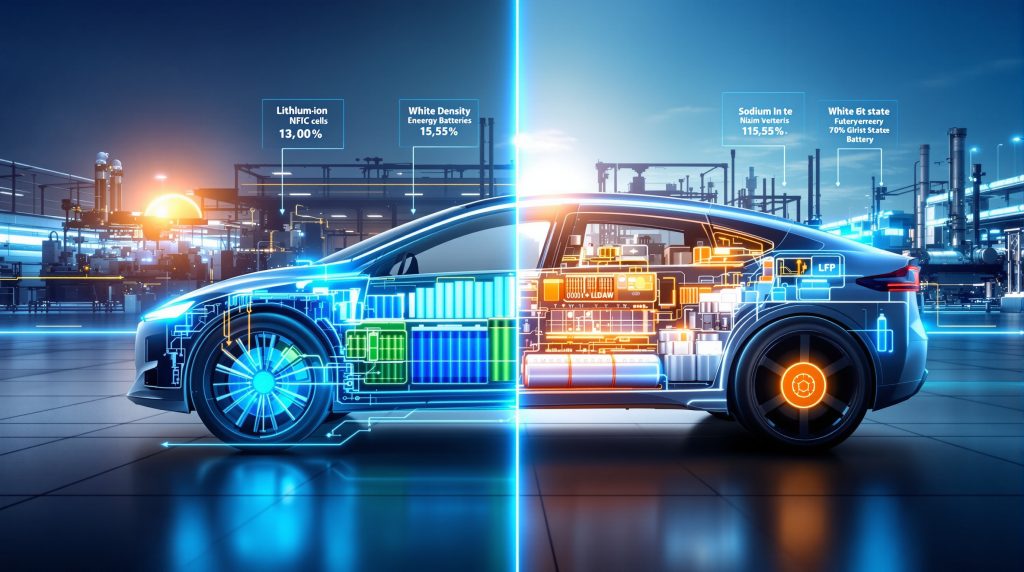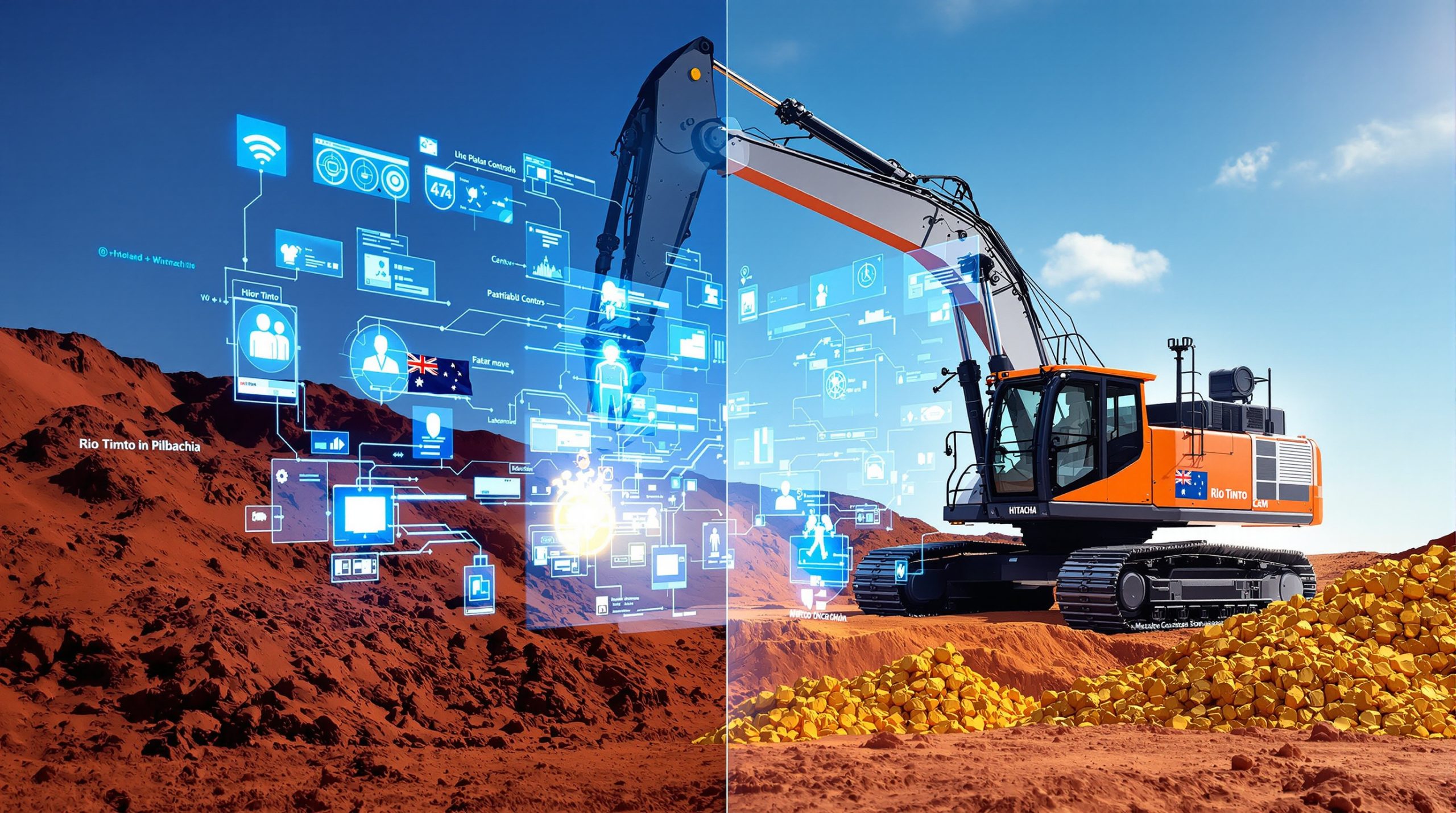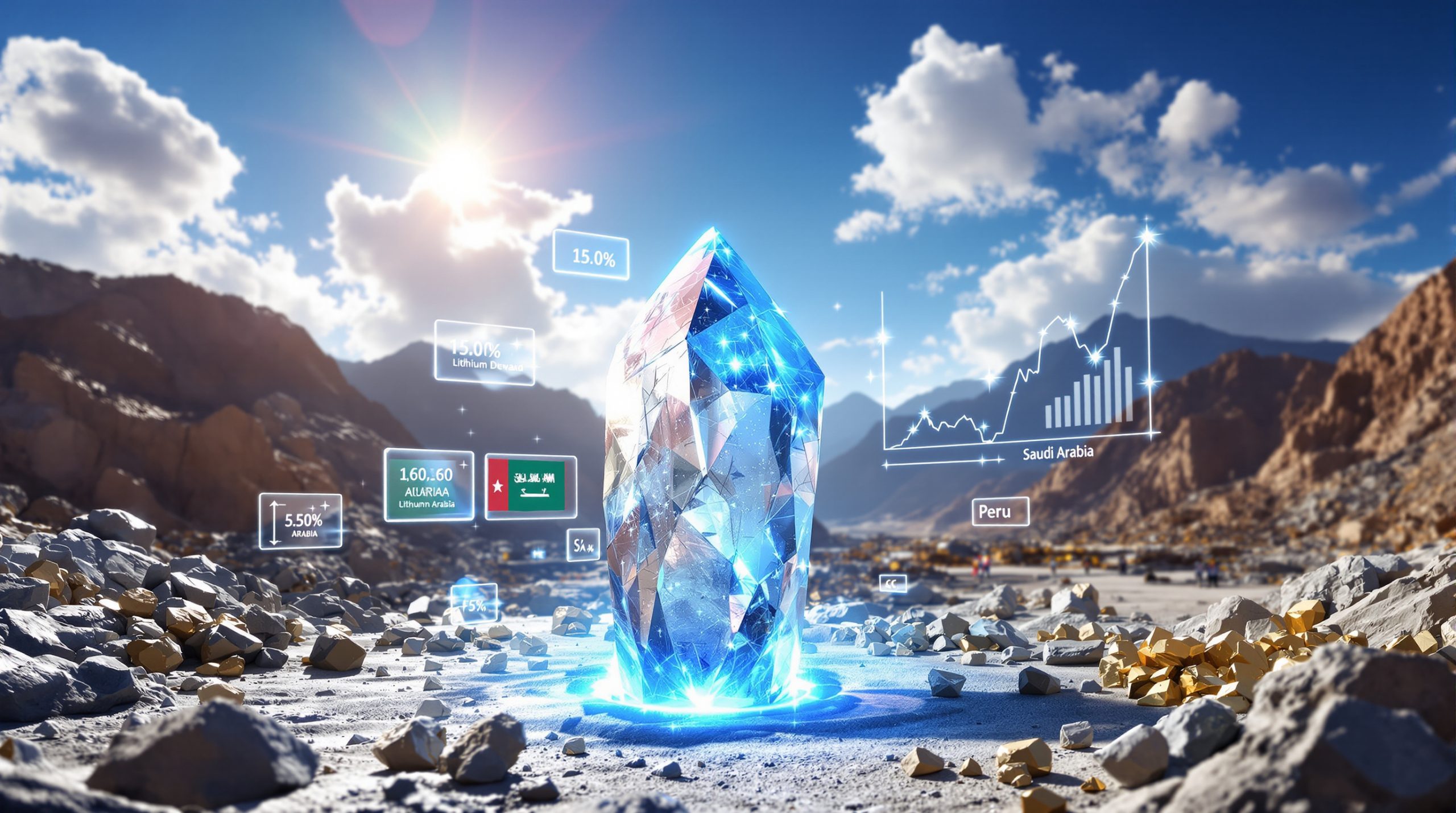Competing Battery Technologies in the EV Industry: A Comprehensive Analysis
What Are the Current Dominant Battery Technologies in EVs?
Lithium-Ion Battery Dominance
NMC (Nickel Manganese Cobalt) batteries continue to command the premium EV segment with energy densities reaching 250-300 Wh/kg, making them the preferred choice for luxury and performance vehicles where range is paramount. Their high energy density comes at a cost premium, but manufacturers have optimized designs to maximize efficiency.
LFP (Lithium Iron Phosphate) batteries now control approximately 37% of the global EV battery market as of 2025, a significant increase from 25% in 2022. This growth stems from their exceptional durability, thermal stability, and lower cost structure, making them ideal for economy and mid-range vehicles where affordability takes precedence over maximum range.
Global lithium-ion battery production capacity has surged to 3,500 GWh in 2024, with China maintaining its dominant position by controlling 85% of cell manufacturing operations. This manufacturing concentration presents strategic challenges for Western automakers pursuing supply chain diversification.
The average lithium-ion battery cost has decreased to $89/kWh in 2025, compared to $137/kWh in 2022, representing a 35% reduction in just three years. This rapid cost decline continues to accelerate EV adoption by improving price parity with internal combustion vehicles.
Critical Supply Chain Challenges
Supply chain vulnerability remains a critical concern, with 90% of lithium-ion battery material processing concentrated in China. This geographic concentration has prompted massive investments in alternative processing facilities across North America and Europe, though these will take years to reach comparable scale.
Cobalt supply continues to raise ethical and strategic concerns, with 70% of global production sourced from the Democratic Republic of Congo. This dependency has accelerated the shift toward reduced-cobalt and cobalt-free battery chemistries, particularly for mass-market applications.
Lithium prices have experienced significant volatility, fluctuating between $15,000-$35,000 per tonne throughout 2024-2025. These price swings have complicated cost forecasting for manufacturers and accelerated research into Australia lithium innovations that could stabilize the market.
Strategic minerals security initiatives launched by the European Union, United States, and Australia collectively represent $17.8 billion in investments aimed at developing domestic supply chains for critical raw materials supply. These programs target not only mining operations but also processing, refining, and recycling infrastructure.
How Do Sodium-Ion Batteries Compare to Lithium-Ion?
Sodium-Ion Advantages
Sodium-ion technology eliminates dependency on lithium, nickel, and cobalt supply chains, addressing both cost and geopolitical vulnerabilities. This independence from critical minerals represents a significant strategic advantage in an era of increasing resource nationalism.
The technology leverages sodium's natural abundance—sodium is approximately 1,000 times more plentiful than lithium in the earth's crust. This abundance translates to dramatically reduced extraction costs and minimal environmental impact compared to lithium mining operations.
Production costs for sodium-ion cells are currently 30-40% lower than comparable lithium-ion batteries, primarily due to the use of aluminum current collectors instead of copper and the elimination of expensive nickel and cobalt in the cathode material.
Sodium-ion batteries feature an enhanced safety profile with non-flammable characteristics, virtually eliminating the risk of thermal runaway events that have plagued some lithium-ion installations. This improved safety profile reduces cooling system requirements and simplifies battery management systems.
The technology demonstrates exceptional cycle life of up to 50,000 recharge cycles—5 to 10 times the lifespan of conventional lithium-ion batteries. This extraordinary durability makes sodium-ion particularly attractive for commercial applications where vehicles operate continuously with multiple charge cycles per day.
Sodium-Ion Limitations
Energy density currently remains limited to 160-200 Wh/kg compared to 250-300 Wh/kg for premium NMC lithium-ion cells. This density limitation translates to approximately 20-30% less range for comparably sized battery packs, restricting their use in premium long-range vehicles.
Commercial-scale manufacturing capacity remains severely constrained at less than 5 GWh globally in 2025, representing just 0.1% of total battery production. This manufacturing gap means sodium-ion batteries cannot yet meet volume requirements for major automakers.
The optimal performance range for sodium-ion technology is still being established across various climate conditions. Early data suggests slightly better cold-weather performance than LFP but inferior performance compared to NMC in extreme cold conditions.
Vehicle integration presents significant challenges as existing battery management systems require substantial recalibration to accommodate sodium-ion's different voltage curves and thermal characteristics. This integration complexity has slowed adoption among established manufacturers with mature lithium-ion platforms.
What Makes Solid-State Batteries Revolutionary?
Solid-State Technology Breakthroughs
Solid-state batteries replace conventional liquid electrolytes with solid materials, enabling theoretical energy densities exceeding 400 Wh/kg—nearly double today's best lithium-ion cells. This density breakthrough could potentially deliver 800+ kilometer ranges in passenger vehicles without increasing battery weight.
Prototype cells have demonstrated the ability to achieve 80% charge in under 15 minutes without degradation or safety concerns. This charging performance stems from superior ion conductivity across the solid electrolyte and improved interfacial contact between components.
The technology offers enhanced safety by virtually eliminating thermal runaway risk. With no flammable liquid electrolyte, solid-state batteries can withstand physical damage, overcharging, and extreme temperatures without combustion risk, potentially revolutionizing battery pack design by reducing or eliminating cooling systems.
Solid-state cells maintain an extended operational temperature range from -30°C to +60°C without significant performance degradation. This wider temperature tolerance eliminates the need for complex thermal management systems that currently add weight, cost, and complexity to EV designs.
The potential battery lifespan has been extended to 12+ years versus 8-10 for conventional lithium-ion cells, representing a 20-50% improvement in usable service life. This longevity enhancement significantly impacts the total cost of ownership calculation for fleet operators and private owners alike.
Commercialization Challenges
Manufacturing scale-up faces significant difficulties with current yields below 70% at pilot plants. The precision required for solid electrolyte deposition and interface management exceeds capabilities of existing high-volume manufacturing equipment, necessitating new production techniques.
Interface stability between solid electrolyte and electrodes remains problematic, with microcracks forming during charge/discharge cycles that degrade performance over time. Resolving these interface challenges requires innovative materials science approaches not yet validated at scale.
Production costs are estimated at 2.5-3× conventional lithium-ion in early commercialization phases. This cost premium reflects both lower manufacturing yields and the use of specialized materials for electrolytes and interface layers, though economies of scale should reduce this differential over time.
First commercial applications are expected in premium vehicles by 2027-2028, initially appearing in limited-production luxury models where the cost premium can be absorbed. Mass-market applications will likely follow 3-5 years later as manufacturing processes mature and costs decrease.
Which Alternative Chemistries Show Promise for EV Applications?
Lithium-Sulfur Technology
Lithium-sulfur batteries offer theoretical energy density up to 2.5× higher than lithium-ion, potentially exceeding 500 Wh/kg. This exceptional energy capacity results from sulfur's ability to host multiple lithium ions per atom, dramatically increasing storage capacity compared to conventional intercalation materials.
The chemistry eliminates the need for nickel, cobalt, and manganese—three of the most supply-constrained and expensive metals in current battery production. This material substitution significantly reduces raw material costs and supply chain vulnerabilities.
Sulfur represents an abundantly available and inexpensive active material at approximately $150/tonne compared to $15,000+/tonne for battery-grade lithium. This cost differential translates to potential cell-level cost reductions of 40-60% compared to conventional lithium-ion technologies.
Stellantis-backed startup Lyten secured $200 million in funding in 2025 to accelerate commercialization of their lithium-sulfur technology, building on their acquisition of Northvolt assets. This significant investment signals growing confidence in the technology's commercial viability.
First commercial deployment is targeted for 2028 in specialty vehicles where energy density provides competitive advantage. Initial applications will likely focus on aviation, premium electric vehicles, and military applications where performance advantages outweigh early-stage cost premiums.
LNMO (Lithium Nickel Manganese Oxide)
LNMO technology represents a cobalt-free chemistry that combines advantages of multiple existing technologies. By eliminating cobalt while maintaining high nickel content, LNMO addresses both ethical sourcing concerns and performance requirements.
The chemistry demonstrates fast-charging capability of under 15 minutes to 80% capacity without significant degradation. This charging performance stems from optimized crystal structures that facilitate rapid lithium-ion movement through the cathode material.
Energy density remains comparable to NMC formulations at 250-280 Wh/kg while eliminating cobalt content entirely. This performance preservation while removing problematic materials represents a significant advancement in sustainable battery chemistry.
Cost profiles are similar to LFP with enhanced performance metrics, positioning LNMO as a potential "best of both worlds" solution. This favorable cost/performance balance makes LNMO particularly attractive for mid-market vehicles where cost sensitivity remains high but performance compromises are undesirable.
Major automaker Renault is leading development with a 2028 production timeline, having invested significantly in research partnerships and manufacturing capacity for this technology. This major OEM commitment suggests confidence in LNMO's potential as a mainstream battery solution.
Legacy and Specialty Technologies
Lead-acid batteries still dominate 12V vehicle systems with 99% market share due to their unmatched combination of low cost, reliability in extreme conditions, and established recycling infrastructure. This continued dominance demonstrates how specialized applications can sustain legacy technologies even amid broader industry transformation.
Nickel-metal hydride (NiMH) batteries maintain a niche in hybrid vehicles with 2.3 million units produced in 2024, primarily for Toyota's hybrid lineup. Their proven reliability, moderate cost, and excellent cycle life ensure continued relevance in specific hybrid applications despite lower energy density than lithium-based alternatives.
Lithium metal polymer (LMP) technology has been repurposed for stationary storage and public transit applications after unsuccessful passenger vehicle implementations. This technology repositioning demonstrates how chemistries with specific limitations can find valuable applications in less demanding use cases.
Sodium nickel chloride batteries (also known as ZEBRA batteries) have found applications in temperature-extreme environments where conventional lithium-ion systems struggle. Their ability to operate efficiently in temperatures from -40°C to +60°C makes them ideal for specialized applications in arctic regions and desert environments.
How Are Battery Technologies Evolving for Different Vehicle Segments?
Segment-Specific Battery Solutions
Economy EVs under $30,000 are increasingly standardizing on LFP and sodium-ion batteries, prioritizing cost and durability over maximum range. These vehicles typically offer 250-350 km range with battery capacities of 40-50 kWh, targeting urban and suburban use cases where charging infrastructure is readily available.
Mid-range EVs priced between $30,000-$50,000 utilize advanced LFP and entry-level NMC chemistry with 350-450 km range capabilities. This segment has seen the most dramatic technology diversification, with manufacturers carefully balancing cost, performance, and durability to meet competitive price points.
Premium EVs exceeding $50,000 deploy high-nickel NMC and silicon-anode enhanced batteries delivering 500+ km range. This segment serves as the technology showcase for battery metals investments, with manufacturers introducing advanced cooling systems, structural battery packs, and cutting-edge cell chemistries.
Commercial vehicles have developed segment-specific solutions with LFP dominating delivery vans and sodium-ion emerging for short-haul applications. Fleet operators prioritize total cost of ownership metrics, with battery durability and replacement costs often outweighing initial acquisition expenses in purchase decisions.
Performance Metrics Comparison Table
| Technology | Energy Density (Wh/kg) | Cycle Life | Fast Charging | Cost ($/kWh) | Key Advantage |
|---|---|---|---|---|---|
| NMC | 250-300 | 1,000-2,000 | 20-30 min | $95-120 | High energy density |
| LFP | 160-200 | 2,000-4,000 | 30-45 min | $80-100 | Cost and durability |
| Sodium-ion | 160-200 | 4,000-50,000 | 20-40 min | $65-85 | No critical minerals |
| Solid-state | 350-500 (projected) | 2,000-3,000 | 10-15 min | $150-250 | Safety and density |
| Li-Sulfur | 400-550 (projected) | 500-1,000 | 20-30 min | $90-130 | Ultra-high density |
What Role Do Raw Materials Play in Battery Technology Selection?
Critical Mineral Dependencies
Lithium demand is projected to reach 2.4 million tonnes LCE (Lithium Carbonate Equivalent) by 2030, representing a fourfold increase from 2022 levels. This demand surge exceeds current production capacity and planned expansion, creating strategic vulnerabilities for lithium-dependent supply chains.
Cobalt supply constraints continue pushing manufacturers toward reduced or cobalt-free chemistries, with NMC cathodes evolving from 111 ratios (33% cobalt) to 811 ratios (10% cobalt) and now toward 90% nickel formulations with minimal cobalt content. This evolution reflects both ethical concerns and economic realities of cobalt sourcing.
Nickel importance and uses in batteries have become a strategic concern with 58% of global supply now directed to batteries. This increasing battery sector demand competes with traditional stainless steel and aerospace applications, driving price volatility and prompting increased investment in nickel mining and processing.
Graphite remains the largest component by weight in conventional lithium-ion batteries, with a typical 60 kWh pack containing approximately 60 kg of graphite. This material dependency has accelerated research into silicon and lithium metal anodes that could significantly reduce or eliminate graphite requirements.
Manganese is emerging as a potential constraint with battery-grade quality requirements exceeding traditional steel industry specifications. The processing capacity for high-purity manganese sulfate suitable for battery applications remains limited, creating potential bottlenecks as LFP and LNMO chemistries gain market share.
Sustainability Considerations
Carbon footprint varies significantly across battery chemistries, ranging from 60-110 kg CO₂e/kWh for NMC to 30-60 kg CO₂e/kWh for LFP. These differences primarily stem from energy-intensive nickel and cobalt processing requirements for NMC production.
Water usage for lithium extraction presents stark contrasts: 2.2 million liters per tonne from brine sources versus 170,000 liters from hard rock mining. This water footprint differential is driving sustainability assessments, particularly in water-stressed regions like Chile's Atacama Desert and Argentina lithium brines.
Recycling infrastructure is developing rapidly with approximately 25% of lithium-ion batteries currently recovered for materials reclamation. Early recycling processes focused primarily on cobalt and nickel recovery, but newer technologies now achieve high recovery rates for lithium and other materials previously considered uneconomical to recycle.
Circular economy initiatives in the battery sector are targeting 90%+ material recovery rates by 2030, with several pilot facilities already demonstrating recovery efficiencies exceeding 95% for key metals. These closed-loop systems will eventually reduce primary material demand and associated environmental impacts.
Environmental regulations are increasingly influencing technology selection across markets, with the EU Battery Passport and similar initiatives requiring detailed carbon footprint and sourcing disclosures. These regulatory frameworks effectively monetize environmental performance, altering the competitive landscape for different battery chemistries.
How Are Automakers Positioning Their Battery Strategies?
Strategic Approaches by Major Manufacturers
The industry is experiencing a clear diversification trend with most OEMs adopting multi-chemistry portfolios tailored to different vehicle segments and markets. This diversification reduces supply chain vulnerability while optimizing performance and cost across product lines.
Vertical integration is increasing dramatically, with 65% of major automakers now investing directly in battery production. This integration strategy provides greater control over technology development, supply security, and cost management compared to pure outsourcing approaches.
Regional supply chain development is accelerating with $175 billion in announced investments for battery manufacturing facilities across North America and Europe. These investments aim to reduce dependency on Asian supply chains while creating manufacturing employment in home markets.
Technology-specific partnerships are forming between automakers and battery specialists, often involving equity investments or joint ventures. These partnerships allow OEMs to access specialized expertise while battery developers secure production volume commitments necessary for scaling operations.
Standardization efforts are emerging around module designs and cell formats, with several major OEMs developing universal battery systems capable of accommodating multiple cell chemistries. This standardization reduces engineering costs while maintaining flexibility to adapt as technologies evolve.
Notable Strategic Developments
Toyota has implemented a dual-track approach combining solid-state battery development for premium applications alongside conventional technologies for mainstream vehicles. This hedging strategy maintains Toyota's leadership in hybrid systems while positioning for future breakthrough technologies.
Volkswagen's unified cell concept represents a design architecture specifically engineered to accommodate multiple chemistries within standardized physical dimensions. This approach allows manufacturing flexibility while reducing engineering costs across multiple vehicle platforms.
BYD's blade battery system has revolutionized LFP implementation by improving energy density through innovative cell-to-pack design that eliminates traditional modules. This structural approach increases volumetric efficiency while enhancing safety through improved thermal management.
Tesla's 4680 cell architecture enables structural battery integration that improves vehicle rigidity while reducing weight. This tabless cylindrical design improves manufacturing efficiency while enhancing thermal performance and reducing electrical resistance.
Emerging OEMs including Rivian, Lucid, and NIO are adopting cell-to-pack designs that eliminate traditional modules, improving energy density by 15-20% compared to conventional modular systems. This architectural approach has now been widely adopted by established manufacturers following its validation by newer market entrants.
What Are the Future Trends in EV Battery Technology?
Emerging Innovations
Silicon-dominant anodes are increasing energy density by 20-40% in next-generation cells by replacing conventional graphite with silicon composites capable of hosting more lithium ions per unit volume. Several manufacturers have announced production timelines for silicon-enhanced anodes within the next 18-24 months.
Lithium metal anodes are under development with theoretical capacity 10 times higher than graphite, potentially enabling energy densities approaching 500 Wh/kg. These anodes eliminate the need for graphite entirely but require compatible solid or semi-solid electrolytes to prevent dendrite formation.
Solid electrolyte interface engineering is extending cycle life and fast-charging capabilities by addressing the primary degradation mechanism in high-performance cells. Advanced coatings and additives are reducing interface resistance while preventing undesirable side reactions that consume lithium ions.
AI-optimized battery management systems are improving real-world performance by 8-15% through predictive control algorithms that anticipate usage patterns and environmental conditions. These systems continuously adapt charging and discharging parameters to maximize both performance and longevity.
Advanced thermal management technologies are reducing degradation in extreme conditions through direct cell cooling, phase-change materials, and intelligent preconditioning. These innovations maintain optimal temperature ranges during both operation and charging, significantly extending battery life in challenging climates.
Technology Adoption Timeline
2025-2027 will see advanced LFP and sodium-ion commercialization at scale, with multiple gigafactories coming online dedicated to these chemistries. This period will mark the transition from predominantly NMC-based EV fleets to much greater chemistry diversity.
2027-2029 will feature the first commercial solid-state batteries in premium vehicles, initially appearing as small-scale production runs in flagship models. These early implementations will focus on performance advantages rather than cost competitiveness.
2028-2030 will witness lithium-sulfur technology entering specialty applications where extreme energy density provides competitive advantage. Aviation and premium performance vehicles will likely serve as early adopters before broader commercialization.
2030-2032 will bring widespread adoption of silicon-dominant anodes across most lithium-ion variants, effectively establishing a new baseline for energy density expectations. This technology represents an evolutionary improvement rather than revolutionary change to existing manufacturing processes.
2032-2035 may see potential breakthrough technologies including lithium-air reaching commercialization after decades of research. These ultra-high-density systems face significant engineering challenges but offer theoretical energy densities approaching internal combustion fuels.
FAQ: Common Questions About EV Battery Technologies
How long do EV batteries typically last?
Modern EV batteries are designed to retain 70-80% of their original capacity after 8-10 years or approximately 160,000-240,000 kilometers of typical use. This degradation rate continues to improve with each technology generation through better thermal management and advanced cell chemistry.
LFP chemistry can extend this lifespan to 12+ years under optimal conditions due to inherently greater cycle life and thermal stability. Commercial fleets utilizing LFP batteries have demonstrated less than 10% capacity loss after 400,000+ kilometers in controlled studies.
Battery warranties typically cover 8 years or 160,000 kilometers, with some manufacturers now offering coverage for up to 10 years or 240,000 kilometers. These warranty extensions reflect growing confidence in battery longevity based on real-world performance data from first-generation EVs.
Proper charging habits significantly impact longevity, with research showing that maintaining state-of-charge between 20-80% can extend useful life by 25-40% compared to routinely charging to 100% and depleting to near-zero. Modern vehicles increasingly automate these optimal charging parameters.
Which battery technology offers the best cold weather performance?
NMC batteries generally outperform other chemistries in cold weather, maintaining approximately 80-85% of rated range at -10°C compared to 70-75% for LFP. This superior cold-weather performance stems from NMC's lower internal resistance and better electrolyte performance at reduced temperatures.
Solid-state batteries show promising cold-weather characteristics in laboratory testing, with prototype cells demonstrating 90%+ capacity retention at -20°C. This exceptional performance results from the elimination of liquid electrolytes that become viscous at low temperatures.
Advanced thermal management systems are increasingly important for all chemistries in extreme climates. Active preconditioning systems that warm battery packs before driving can recover most capacity losses regardless of specific chemistry.
Battery preheating consumes approximately 3-5% of total capacity per hour of operation in sub-zero temperatures, representing a significant energy overhead for vehicles parked outdoors in cold climates. This consumption is driving development of more efficient heating systems and improved insulation.
Are EV batteries recyclable?
Yes, modern EV batteries are increasingly recyclable, with current technologies able to recover 90%+ of critical materials including lithium, cobalt, and nickel. First-generation recycling focused primarily on valuable materials like cobalt, but economic incentives now support comprehensive recovery of most battery components.
The recycling infrastructure is rapidly developing with specialized facilities now operating in North America, Europe, and Asia. Total processing capacity remains limited compared to future end-of-life volumes, but significant capacity expansion is underway with over $3.5 billion invested in recycling facilities since 2020.
By 2030, recycled materials are expected to supply 15-20% of battery manufacturing needs, reducing pressure on primary material extraction and associated environmental impacts. This "urban mining" approach offers both economic and environmental advantages as recycling technologies mature.
Direct recycling methods that preserve cathode structures are emerging as alternatives to traditional pyrometallurgical and hydrometallurgical processes. These approaches could potentially reduce recycling energy consumption by 50-70% while maintaining higher material value.
How do different battery technologies impact charging speed?
Charging speeds vary significantly between chemistries, with NMC batteries typically supporting 150-350 kW fast charging, enabling 10-80% charge in 20-30 minutes. This superior fast-charging capability stems from lower internal resistance and better lithium-ion mobility within the cathode structure.
LFP batteries generally charge at 100-150 kW rates, requiring 30-45 minutes for 10-80% charge. This slower charging stems from fundamental limitations in lithium-ion transport through the olivine crystal structure of LFP cathodes.
Emerging solid-state technologies demonstrate potential for 350+ kW charging, potentially reducing charging times to under 15 minutes for 10-80% charge. This exceptional performance results from superior ion conductivity across optimized solid electrolytes and improved interfacial contacts.
Charging speed is increasingly limited by battery thermal management rather than chemistry. Advanced cooling systems including direct liquid cooling of cells can sustain higher charging rates than air-cooled or indirect cooling designs regardless of specific chemistry.
The Evolving Landscape of EV Battery Technologies
The electric vehicle battery technology landscape is experiencing unprecedented diversification and innovation, moving rapidly beyond the lithium-ion paradigm that has dominated the first decade of mass-market EVs. While NMC and LFP variants currently command the majority of the market, we're witnessing the emergence of multiple compelling alternatives addressing key limitations in energy density, charging speed, safety, and critical material dependencies.
The transition from a predominantly lithium-ion market to a multi-chemistry ecosystem reflects both technological maturation and strategic adaptation to supply chain vulnerabilities. Major manufacturers are increasingly adopting portfolio approaches that leverage different battery technologies for specific vehicle segments and use cases, optimizing the balance between cost, performance, and sustainability.
This technological diversification creates a more resilient and sustainable battery industry by reducing dependency on any single material or manufacturing process. The development of sodium-ion, solid-state, and lithium-sulfur technologies alongside advanced lithium-ion variants provides multiple pathways to address the exponentially growing demand for energy storage in transportation applications.
For consumers, this evolution will deliver electric vehicles with longer ranges, faster charging capabilities, improved durability, and potentially lower costs as manufacturing scales and competition intensifies. The performance gap between entry-level and premium EVs will likely increase as manufacturers deploy advanced chemistries selectively across their product lines.
For manufacturers, the ability to strategically select and integrate the right battery technology for each vehicle segment and market has become a critical competitive advantage. Companies that successfully navigate this increasingly complex technology landscape will establish sustainable cost and performance advantages while reducing exposure to supply chain disruptions.
The next decade will likely see this diversification accelerate further, with different chemistries establishing dominance in specific application niches rather than any single technology achieving universal adoption. This specialization represents the natural maturation of the industry as it moves beyond the one-size-fits-all approach of early electrification toward purpose-engineered solutions for different mobility needs.
Further Exploration:
Readers interested in learning more about battery technologies for electric vehicles can also explore related educational content available through Battery Industry's online resources at batteryindustry.net.
Seeking to Profit from Mineral Discovery Announcements?
Discover how to gain an immediate edge on the ASX with Discovery Alert's proprietary Discovery IQ model, which instantly notifies you of significant mineral discoveries the moment they're announced. Explore our dedicated discoveries page to see how past mineral discoveries have generated substantial returns and start your 30-day free trial today.




